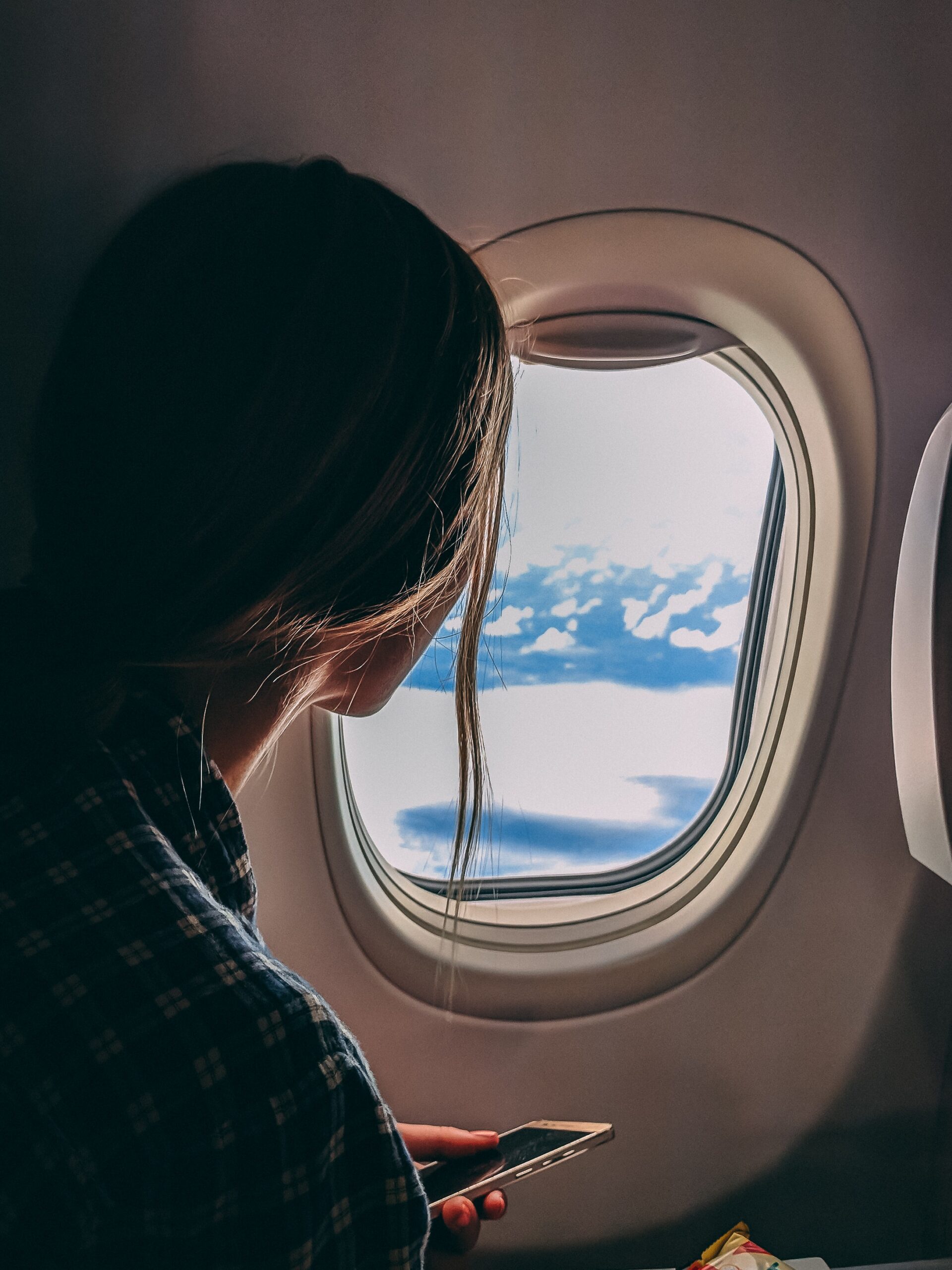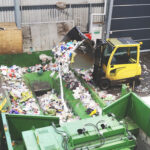Hello everybody! I want to talk about the impact of tourism, it is an industry that we often look towards as a big sinner when comes to carbon footprint, so I want to take a deep dive into what aspects in particular cause this industry to be so impactful. However, I also want to highlight ways of travelling or exploring that could be less impactful, or even beneficial to the planet. So, let’s dive in (get it? Because tourism, travelling, scuba diving? Anyway).
It is no secret that we have moved around throughout the entirety of human history, as such “travelling” is not a new concept or phenomenon, but something that has always been necessary. However, travelling for the sake of pleasure or leisure IS a fairly new concept, considering how long humans have existed.
also check out: The Environmental Impact of Your Phone // and how to reduce it
The history of travelling for pleasure
We see aspects of travelling for pleasure or cultural gain all the way back to the Antiquity, of course, that kind of “tourism” is a lot different from what we think about today. The early stages of modern tourism can be traced back to the 17th century. This was when rich people and nobles in Western and Northern Europe would embark on “the grand tour”, which was a long journey through France, Germany, Italy, and Greece, and the tour had the purpose of educating young people, letting them discover art, history, culture etc (this is all incredibly Eurocentric mind you).
also check out: The environmental impact of crystals // not so healing after all…
By the 18th century, it was pretty common among the wealthy, and as such, it spread to North America as well. The widespread interest in travel at this time lead extremely quickly to religious pilgrimages and missionary work (which is just another way of saying that wealthy white people journeyed out into the world to seriously bother indigenous people (mildly put). This was made possible by the Industrial Revolution, which evoked major developments in the economic, social and technological sectors – we saw new social classes, as well as more efficient transportation methods. More people with more money and more way to get around = wanderlust.
In the 19th century the very first travel agencies appeared, these firms offered holiday packages which included tickets, accommodation and food, this made planning trips easier, and so, more people went on them.
In the 20th century we saw the mass production of buses and cars, as well as improvement in air transport, these developments along with labour legislation and a growth in social welfare meant that people had more time on their hands, more money to spend, and the means of transportation necessary. After WW2, coastal tourism gained momentum, and this led to the tourism industry we know today.
also check out: the impact of microplastic and how to avoid it
Tourism today
In 1950, there were recorded 25 million annual tourist arrivals. In 1970, it was 166 million, and by 1990 that number had grown to 435 million annual tourist arrivals. Since the 90s that number has more than tripled. Today more than 1.4 billion tourists arrive at their destination every year. And by 2030 it is predicted that 1.8 billion tourists will be arriving at their destination. It is a huge part of the global population that takes part in this type of activity, so what’s the impact?
also check out: The Impact of Chocolate // environmental and social analysis of our favourite treat
Transportation
Tourism is accountable for about 8% of global carbon emissions. That is a lot. Aeroplanes, as a whole, account for about 2.5% of global emissions (and 5% of global warming is caused by water vapour trails produced by aircraft). Of course, there is some overlap between those, we’ll get back to that. But 8% is massive. According to Sustainable Travel International, 49% of the emissions related to tourism comes from transportation, 12% from purchasable goods, 10% from food and beverages, 8% is agriculture, 8% from services, 6% is lodging, 6% is construction and mining and then 1% is other aspects, not disclosed (my guess is snow globes).
With airfare becoming more affordable, more people are going on holidays, and a rather recent development shows that since 2006, transportation emissions related to tourism have increased by 60%. Because of aviation. There is a huge issue with the impact of the aviation industry, although it is estimated that nearly 80% of the world’s population doesn’t fly at all. On the other end of the spectrum we have private jets, which have a much higher carbon footprint than commercial aeroplanes, it’s 14 times higher on average actually.
also check out: The Environmental Impact of Cryptocurrency
But is the aeroplane the most polluting means of transportation? No, actually, there is something worse. Even the most energy and fuel-efficient cruise ship is still 3-4 times as polluting as a commercial jet. Cruise ships with swimming pools, skating rinks, rollercoasters and malls can house thousands of passengers and are often over three football fields long. A cruise ship can burn 250 tons of fuel in a single day and can emit the same amount of carbon as 12.000 cars. Even when combining the impact of air travel and the impact of the hotel, staying on a cruise will still be at least twice as polluting. To that comes the fact that cruises waste massive amounts of water, resources and food, keeping guests happy with all-you-can-eat buffet arrangements.
Resources
Tourism often puts a lot of pressure on natural resources, and often in areas where resources are already scarce. The pollution includes wastewater problems, and depletion of fresh water. When speaking of water use and tourism, one specific thing especially comes to mind: golf courses. An average golf course in a tropical country use as much water as 60,000 village inhabitants. Moreover, it also uses 1500 kilos of chemical fertilizers, pesticides and herbicides each year. Forests and other natural areas are destroyed to make room for big lawns and golf courses, creating an imbalance in ecosystems and disturbing biodiversity.
also check out: The Impact of Lawns
The tourism industry also sees overconsumption of water as an effect of hotels, swimming pools, and personal water use by tourists. Studies find that consumers use a lot more resources when on vacation than when they are home. On holiday, tourists can use up to 440 litres of water a day. This is especially an issue since many popular tourist destinations are areas that experience draughts and water scarcity.
Areas, and especially cities that are heavily affected by tourism often create a strained relationship between visitors and locals, because rising tourism forces locals out of their neighbourhoods because prices are inflating and becoming too expensive. As such, the “authenticity” that many tourists often seek out ceases to exist because major areas of famous cities are becoming inaccessible to their inhabitants. One example of this is the impact of services like Airbnb. In popular urban tourist destinations, hosts are converting long-term rentals that previously houses local residents and families into a short-term rentals for tourists, this doesn’t happen a little bit, it has happened on a massive scale and it’s driving up costs of living and rent so that locals can’t live in the cities. This is even known as the “Airbnb effect”. In 2020 vacation home purchases exceeded the growth of existing-home sales by 44% from the year prior. And you would think that when you rent a room via Airbnb that the money is going into the community, which is good, well that isn’t happening actually. The majority of revenue generated from Airbnb is going to a small pool of stakeholders, 25% of the listings on Airbnb run over 66% of the listings. These stakeholders convert entire apartment buildings into de facto hotels because you can earn a lot more from short-term tourists than long-term residents.
also check out: The Environmental Impact of Soy
Examples of over-tourism
Did you know that 80% of the world’s tourists visit 10% of tourist destinations? We all want to see the same famous sites, and that creates crowds. Overtourism is a big issue, both in terms of how natural environments react to crowds, but it is also a problem in cities, we see waste management issues, lacking infrastructure and air pollution from the dense concentration of people visiting at the same time.
Maya Bay in Thailand which is known by many from the movie “The Beach,” saw approximately 2.5 million visitors in 2018, and averaged roughly 4000 visitors per day. The crowds and boats destroyed over 80% of the coral reefs which, in turn, killed off much of the rare sea life in the area too. As a result, Thailand’s Department of National Park, Wildlife and Plant Conservation closed the site to tourists to make it possible for nature to bounce back. It has since reopened, however with restrictions put in place so the area won’t experience the same level of destruction again, including a guest maximum capacity, and floating docks to avoid boats in the bay. Similar problems can be seen at many destinations, like Boracay Island in the Philippines.
Machu Pichu in Peru has been dealing with overtourism for decades. The fragile site isn’t built to handle 1.4 million annual visitors, and in 2016 UNESCO put Machu Pichu on the list of World Heritage Sites in Danger. When it comes to ancient ruins, buildings and culturally significant sites tourists don’t always have the same attachment to these things as locals and treat them poorly by jumping on them, etc climbing them, and as a result, many ruins are becoming in increasingly worth shape in a record short time.
The Croatian city of Dubrovnik and its surrounding environment are heavily impacted by cruise ships. In 2016, the city saw a whopping 529 ships with almost 1 million passengers. The Old Town in the city is also a UNESCO World Heritage Site, and the site is simply not built for that level of activity. Furthermore, tourism is also forcing local inhabitants out of the area. As of 2019, only 2 cruise ships are allowed per day. We see similar problems in Venice in Italy, Santorini in Greece etc.
Bali’s most famous beaches is being covered under 60 tonnes of plastic waste every day, and according to Bali’s tourism ministry, the pressing issue regarding the polluted beaches is directly related to overtourism and poor waste management systems, that simply aren’t designed for additional 5.7 million annual tourists. Moreover, a lot of the waste doesn’t actually come from Bali but is a result of global plastic pollution washing up on the shores of Bali.
also check out: The Environmental Impact of Billionaires // going to space and being ultra-rich
How to travel sustainably:
- Use a local guide when exploring natural areas
- Stick to the path
- Slow down and stay for more than one night
- Respect landmarks and natural sites
- Respect local customs and cultures
- Buy locally-produced souvenirs
- Support local artists and musicians
- Support conservation projects at your destination
- Avoid animal exploitative attractions like tiger-petting, elephant riding or orca shows etc
- Visit your destination in the off-season
- Experience local cuisine rather than expecting “foods from home”.
- Research overtourism and choose less crowded areas
- Learn local recycling systems, and consume materials that can be recycled
- Support local businesses rather than chains
- Use reusables to avoid unnecessary waste
- Consume resources like you’re home
- Avoid buffets and all-you-can-eat arrangements
- Boycott cruise ships all together
- Don’t be annoyed or angry if an attraction isn’t accepting more visitors, it’s probably because they are protecting the site (book tickets from home if you want to be one of the ones let in, but don’t give negative feedback to conservations efforts)
- Choose Green Key-certified hotels
- Use Happy Cow to find plant-based food options
- Use public transportation as much as possible, instead of taxis
- Choose destinations where you can don’t need to fly, but can take trains and busses
- If you have to fly, don’t choose 1st class (or private jet)
- Book non-stop flights, because takeoff and landing is actually where carbon emissions are the highest
also check out: The Environmental Impact of Fast Food // HOW CAN A HAMBURGER COST $1?




